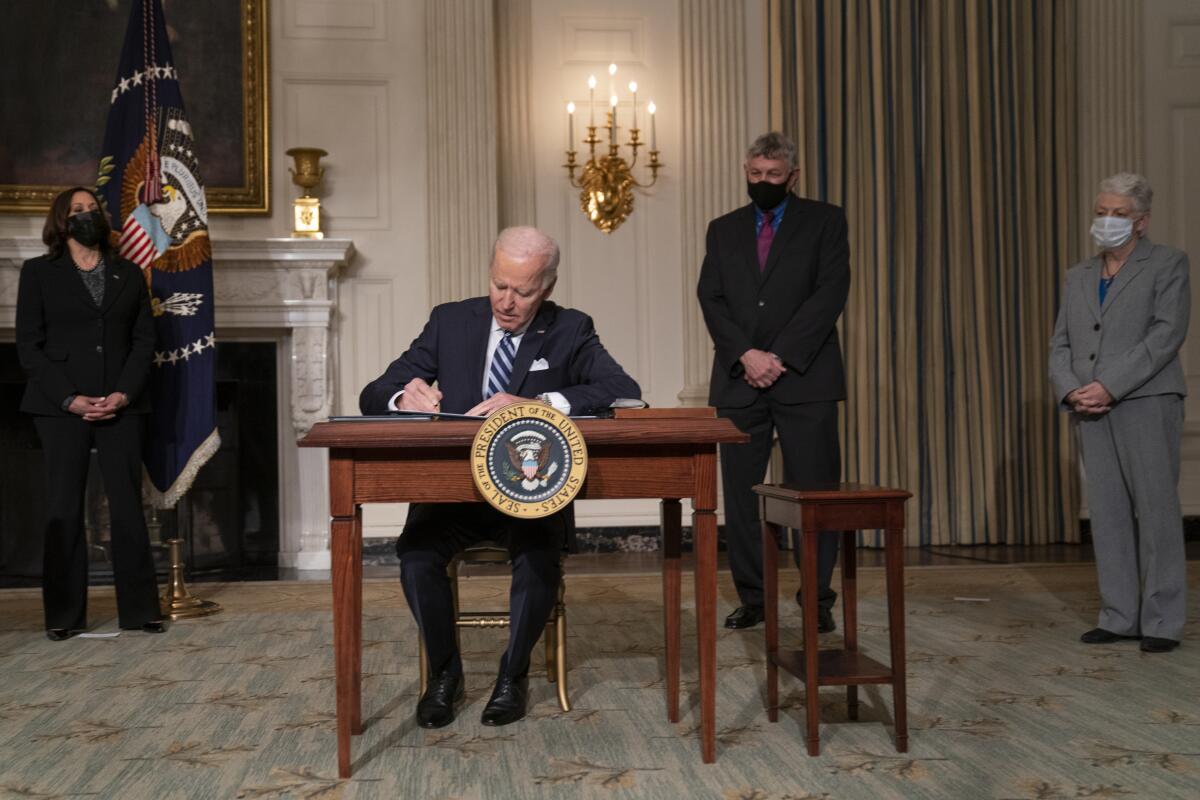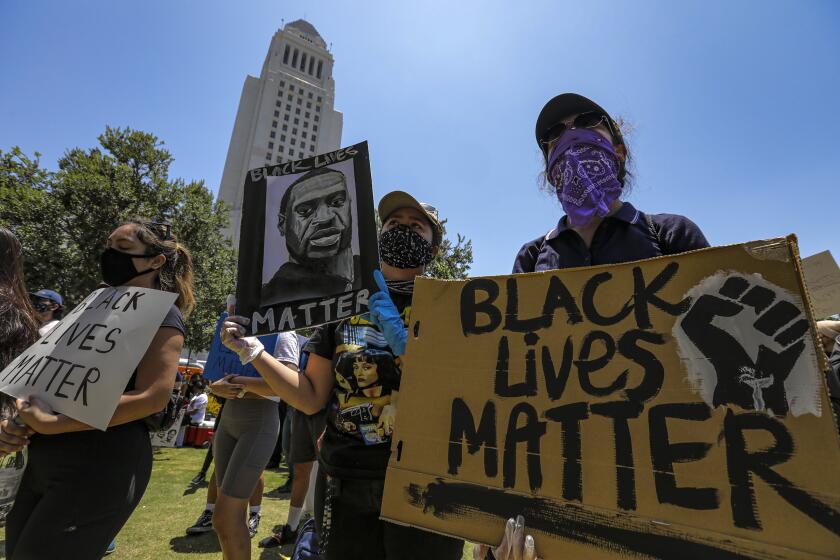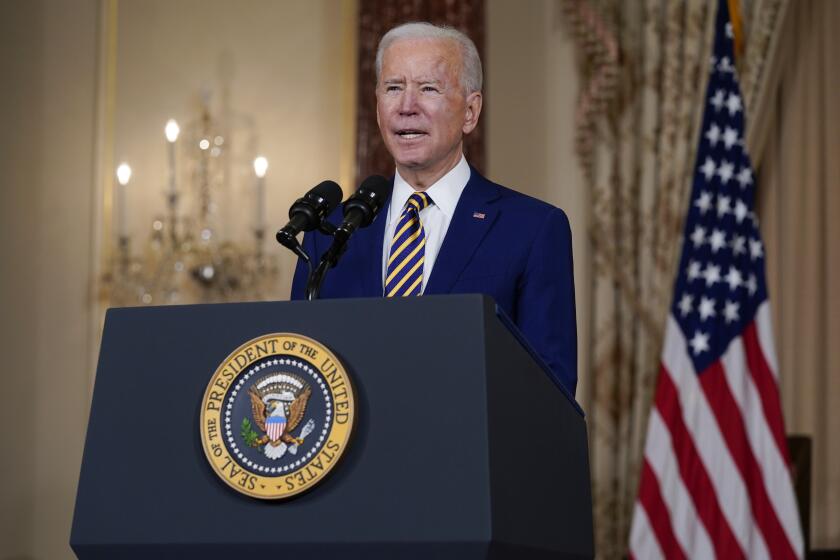Editorial: Biden’s Climate Conservation Corps could be an old answer for new problems

- Share via
President Biden hopes to take a page from the New Deal playbook and launch a modern version of the Depression-era Civilian Conservation Corps. The idea is to use government programs to provide jobs and training for workers on public projects aimed at preparing for, mitigating or forestalling some of the worst environmental impacts of global warming. It’s a fine idea, though notably at the moment it’s just an idea.
We’ll wait for the details of Biden’s Civilian Climate Corps, which are due in late April, before rendering judgment. But we’re encouraged by the broad scope of what Biden wants to accomplish by merging solutions to two pressing problems.
The president last month directed the Interior and Agriculture departments to flesh out the specifics of a Civilian Climate Corps Initiative “to mobilize the next generation of conservation and resilience workers” who will “conserve and restore public lands and waters, bolster community resilience, increase reforestation, increase carbon sequestration in the agricultural sector, protect biodiversity, improve access to recreation, and address the changing climate.”
The George Floyd ‘valentine’ shows racism continues in the LAPD. Two positives: It was reported by an officer and condemned by the union and chief.
The nation has already seen some of the effects of climate change, including raging wildfires here in the West, stronger and more intense hurricanes along the Gulf and Atlantic coasts, and other extreme weather events pretty much everywhere. A Civilian Climate Corps obviously can’t do much to stop the weather changes. But it can work to mitigate some of the problems, such as by promoting wildfire prevention (by thinning forests, for example), planting trees, restoring wetlands and removing invasive species.
Biden’s proposal is part of a broader rollout of environmental policies by the president, including his embrace of the international movement to enact legal protections against development for 30% of oceans and 30% of land by the year 2030 — dubbed “30 by 30” by proponents — which would help preserve habitats for species and maintain forests and other natural collectors of atmospheric carbon.
Such projects can help put people to work, and now would be a good time for that. According to the Bureau of Labor Statistics, unemployment among people between the ages 20 and 24 was 10.3% in the last three months of 2020, and even higher for teenagers and higher still for nonwhites, compared with a national rate of 6.5%.
Crafting programs that will mesh the need for jobs with appropriate public projects and without competing with existing federal workers and contractors will be a challenge. That wasn’t a problem for the original Civilian Conservation Corps, but that’s because it was launched during a time of massive unemployment. That CCC put 3 million unskilled single men, most between the ages of 18 and 25, to work in camps scattered around the country tackling such projects as planting trees, building bridges and campgrounds, establishing wildlife preserves, building trails, roads and visitor facilities in national parks and helping state governments create more than 700 parks.
As a program of its time, unfortunately, it offered few opportunities for women and segregated the men’s camps by race, an approach that clearly must be left to history. In fact, a Civilian Climate Corps could offer nonwhites, particularly in urban areas, an entry into work and careers they might otherwise not consider.
House Democrats are taking a big swing at child poverty in their COVID-19 relief bill. But one year of extra payments isn’t much of a fix.
Such a corps should not be just a temporary jobs program. It should link the work with training for potential future employment, perhaps meshing with existing apprenticeship programs, and give preference to people currently unemployed or underemployed, the homeless or others showing clear need for economic help. Those who sign up should be able to use the training and experience to gain certifications that would help them move on to better future jobs and perhaps establish careers.
And it can build on, or intersect with, existing corps programs, such as the California Climate Action Corps, which recently placed 63 corps members with 26 nonprofits or local governments in Los Angeles, Redlands, Fresno, Stockton and San Jose doing a range of climate-related projects, including urban greening and wildfire mitigation. Nationally, the Corps Network representing more than 130 corps programs around the country offers an established framework for how such programs can work.
However it is structured, the Civilian Climate Corps can help the nation combat global warming and mitigate some of its effects. Yet the program also must help corps members prepare for their next jobs too. It’s a tall order, we know, but the potential gains for the environment and for those needing work are significant.
More to Read
A cure for the common opinion
Get thought-provoking perspectives with our weekly newsletter.
You may occasionally receive promotional content from the Los Angeles Times.












